What Will I Learn?
At the end of this tutorial:
♦ The readers will be able to create a controlling circuit for high voltage or high current loads like DC motors and incandescent lamp.
♦ The readers will be able to know how the circuit works.
♦ Learn to apply the circuit in the future electronic projects
Introduction
In this tutorial, we will create an electronic circuit that will control the high voltage or high current loads using the power transistor and a potentiometer. The potentiometer will control the current flow at the output of our microcontroller while the power transistor will provide the high voltage or high current output that is connected to the dc motor and incandescent lamp.
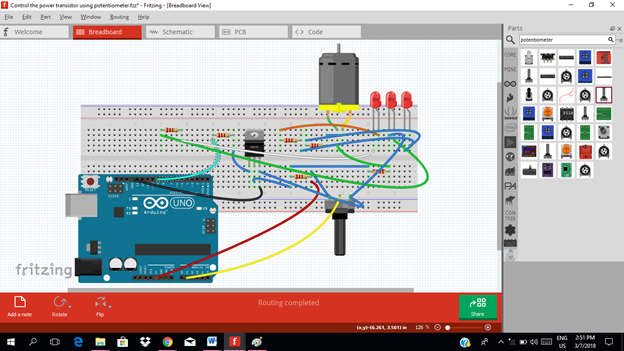
You can read more about Power Semiconductive Devices here
Requirements
Electronic Components
♦ Arduino Uno
♦ NPN Power Transistor
♦ LED
♦ Potentiometer
♦ DC motor
♦ Resistor
♦ Breadboard
♦ Connecting wires
Software
♦ Fritzing application
Difficulty
♦ Intermediate
Tutorial Contents
Using the fritzing software, we will create our circuit diagram, arduino codes and prototype using the breadboard
Part I. Schematic Diagram
So first let us construct our circuit diagram.
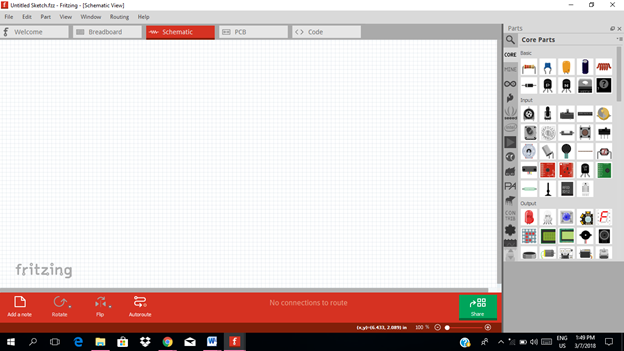
Select the electronic components needed for the circuit in the fritzing library. We need 1 arduino uno, 1 NPN power transistor, 6 resistors, 1 DC motor, 1 potentiometer and 3 LEDs.
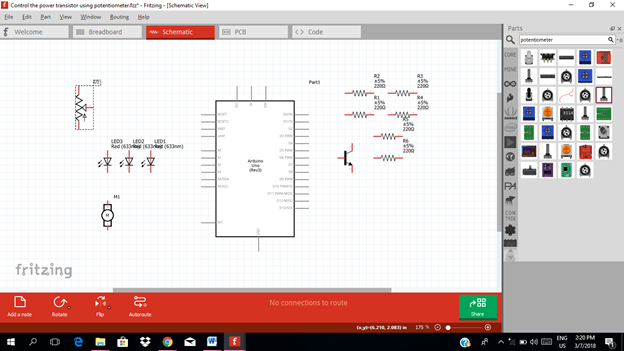
Arrange the components before constructing the circuit.
In arranging the components, place all the components for the input side (left side) of the arduino and the components for the output side (right side).
At the input side of our circuit is the potentiometer that serves as the controlling element of the microcontroller’s output signal. While at the output side of our circuit, we have the power amplifier circuit with the power transistor and the external load circuit that is compose of the dc motor and the three leds.
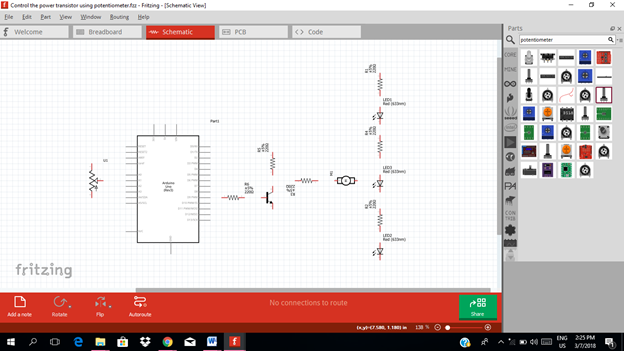
Now let us construct our circuit diagram.
The potentiometer has three pins, one pin for the source voltage from the microcontroller, one for the input pin of the microcontroller (we use pin 1) and one for the ground terminal as shown in the figure below.
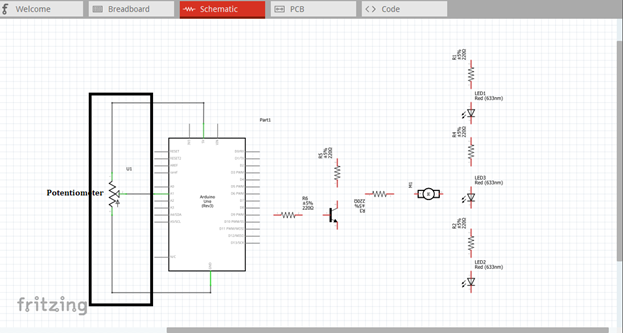
At the output side of our circuit, we have one output signal from pin 13 of the microcontroller that will be connected to the base resistor of the npn power transistor. This output signal is the triggering signal of the power transistor.
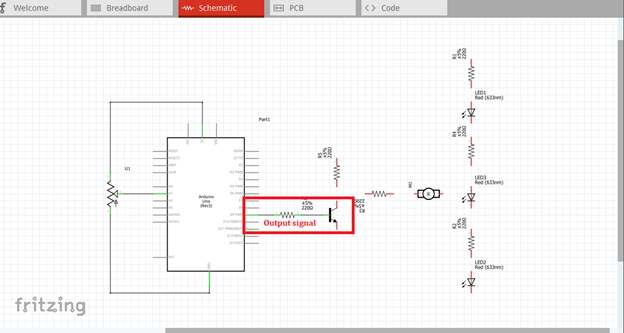
We have the high voltage or high current load circuit that is connected in series. The same current will flow through the dc motor and to the three leds.
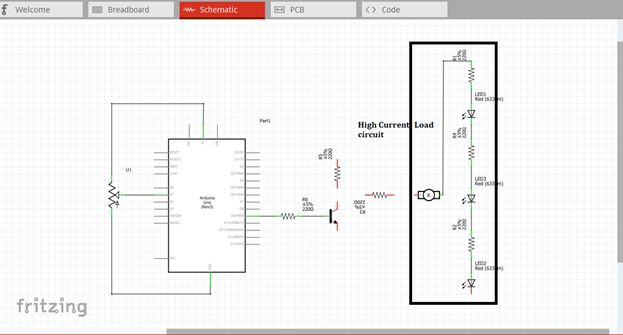
The amplified output at the collector terminal of the power transistor will be connected to the external circuit load as the source current or voltage. It depends which source you want to use.
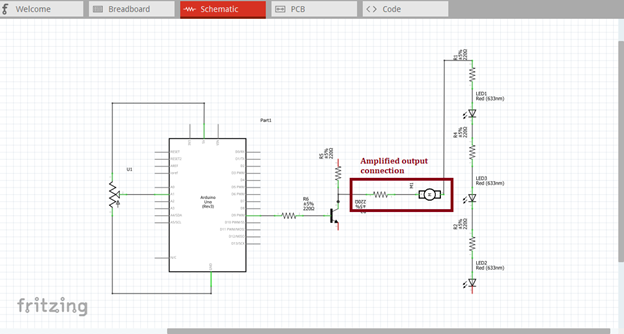
Now this is our final circuit diagram.
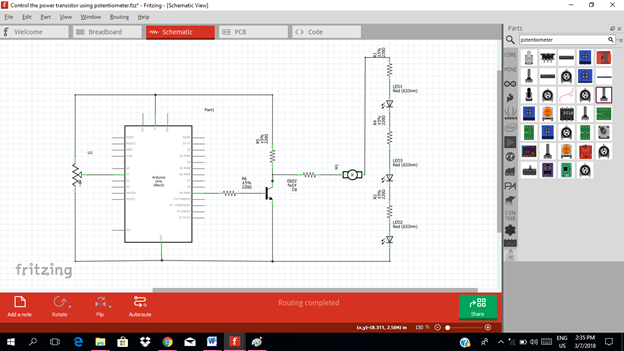
In order to control the input signal, manually adjust the potentiometer so that the input signal of the microcontroller will be limited. While at the output side, the transistor will allow us to control the circuit that’s carrying a high current or high voltage from the microcontroller. Please do extra careful when dealing this high voltage or high current loads.
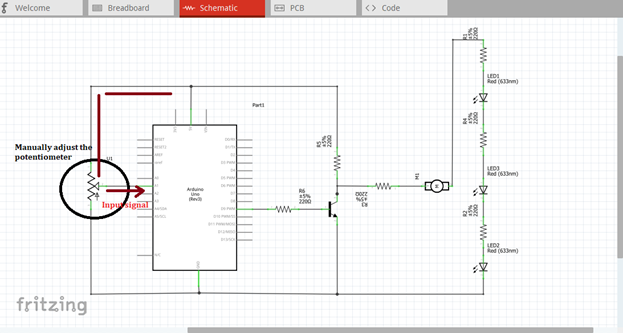
When the arduino receives an input signal from the potentiometer through the pin A1, it will give an output signal in the pin 13 base from the programmed codes. This output is then fed to the base resistor of the power transistor to trigger the circuit.
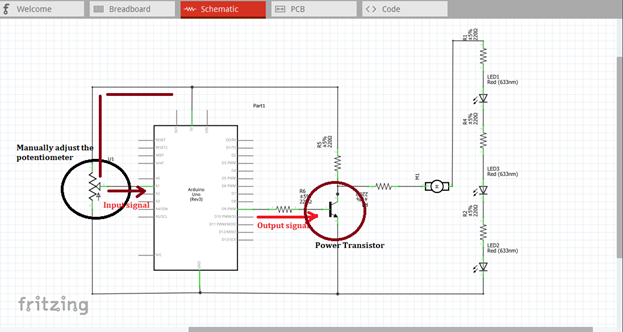
Upon triggering the power transistor, it will give an amplified output signal that will drive the external load circuit. In the load circuit, you can use another source voltage that will be triggered by a relay. The dc motor and the three leds were connected in series so that same current will flow through this circuit.
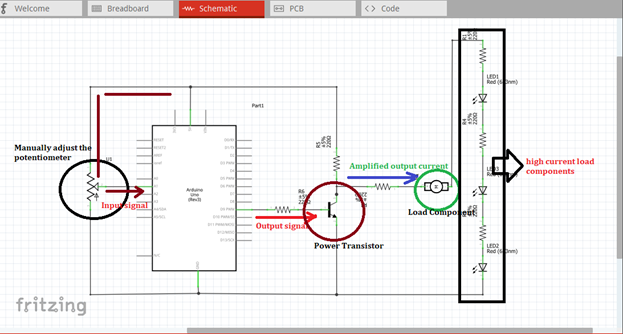
Part II. Code
Now let us do programming of our Arduino uno.
Click on code to start.
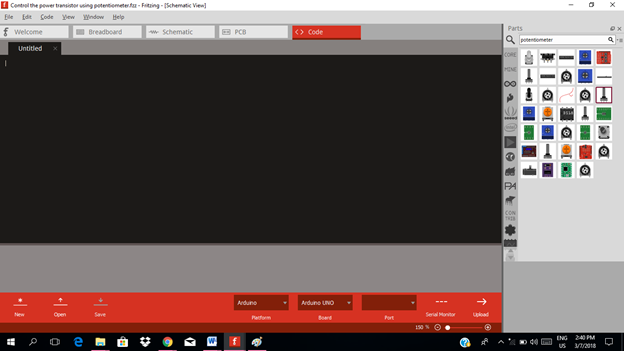
The input pin for our microcontroller from the output of the potentiometer is the analog pin 1 and the output pin is 13.
int potPin = 1; //potentiometer input pin
int resPin = 13; //output pin for our power amplifier circuit
int potValue = 0; //initial value store in the potentiometer terminal
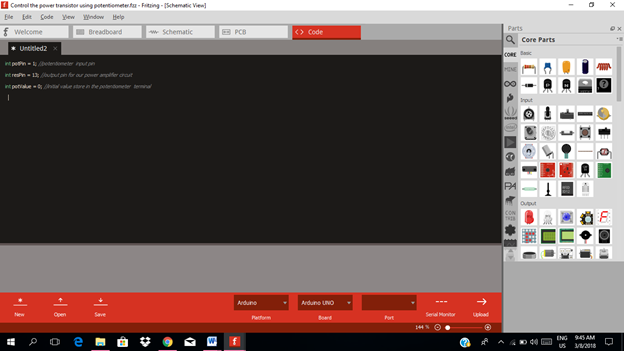
void setup() {
pinMode (potPin, INPUT); //potentiometer output terminal as input value
pinMode(resPin, OUTPUT); //digital output signal to the power amplifier circuit for the external load
}
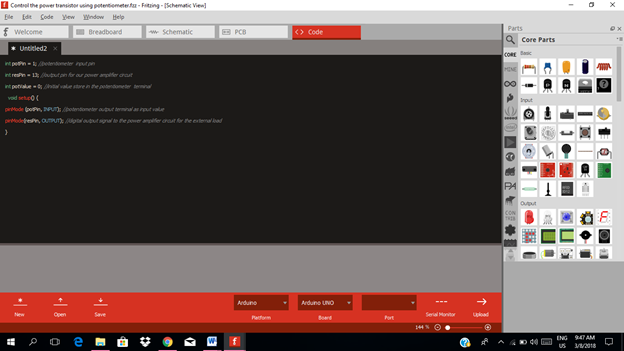
void loop(){
int potValue = analogRead(potPin); //read analog value from the potentiometer output
int resValue = map(potValue, 0 ,1023, 0, 255); //map the potentiometer value from 0 -255
digitalWrite(resPin, resValue); //give output at pin 13 to be amplified at the power amplifier circuit
}
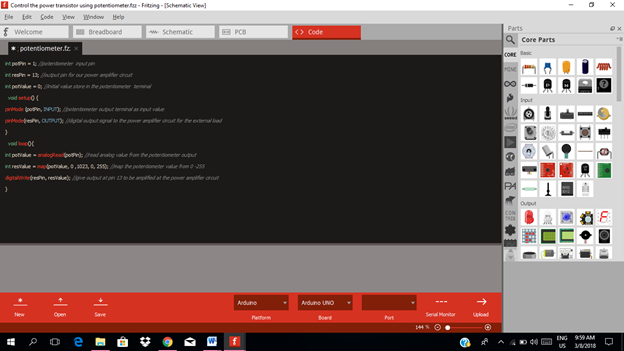
Here are our arduino codes.
int potPin = 1; //potentiometer input pin
int resPin = 13; //output pin for our power amplifier circuit
int potValue = 0; //initial value store in the potentiometer terminal
void setup() {
pinMode (potPin, INPUT); //potentiometer output terminal as input value
pinMode(resPin, OUTPUT); //digital output signal to the power amplifier circuit for the external load
}
void loop(){
int potValue = analogRead(potPin); //read analog value from the potentiometer output
int resValue = map(potValue, 0 ,1023, 0, 255); //map the potentiometer value from 0 -255
digitalWrite(resPin, resValue); //give output at pin 13 to be amplified at the power amplifier circuit
}
Part III. Breadboard
Click on the breadboard.
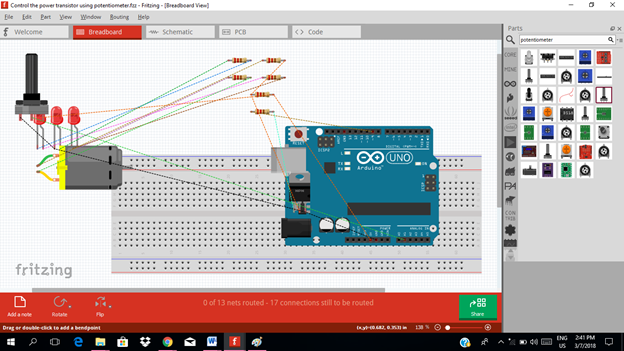
Arrange each component in the breadboard before connecting.
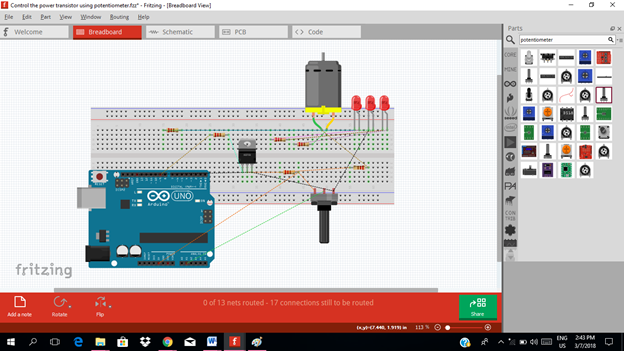
Now connect each component if you don’t know how to connect using breadboard just read my previous tutorial about how to construct a circuit in the breadboard
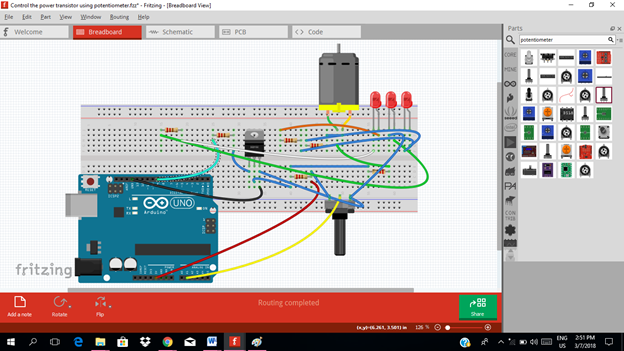
Application
The readers can create their own circuit in controlling high voltage or high current loads using power transistor like the example below.
Curriculum
Here are my other tutorials for electronic projects.
ELECTRONIC PROJECTS
Posted on Utopian.io - Rewarding Open Source Contributors
Being A SteemStem Member
Downvoting a post can decrease pending rewards and make it less visible. Common reasons:
Submit
Thank you for the contribution. It has been approved.
You can contact us on Discord.
[utopian-moderator]
Downvoting a post can decrease pending rewards and make it less visible. Common reasons:
Submit
thanks @cha0s0000 ...done editting
Downvoting a post can decrease pending rewards and make it less visible. Common reasons:
Submit
Hey @rfece143 I am @utopian-io. I have just upvoted you!
Achievements
Community-Driven Witness!
I am the first and only Steem Community-Driven Witness. Participate on Discord. Lets GROW TOGETHER!
Up-vote this comment to grow my power and help Open Source contributions like this one. Want to chat? Join me on Discord https://discord.gg/Pc8HG9x
Downvoting a post can decrease pending rewards and make it less visible. Common reasons:
Submit